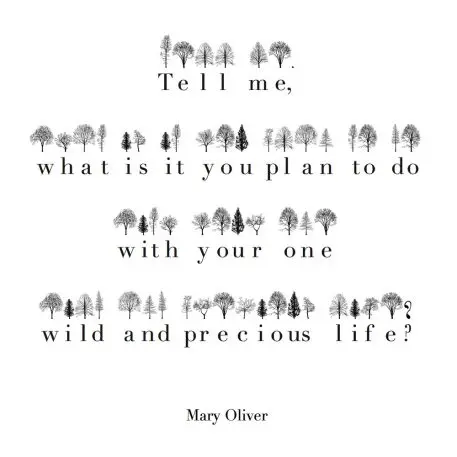Linden. Oak. Virginia pine. Elm. Side-by-side, they might look like four random trees. But if you speak the tree language of the New York City, you know these trees spell something else. Linden. Oak. Virginia pine. Elm. Love.
The Tree Alphabet (which you can download free) was developed by Katie Holten, one of the first recipients of an artist-in-residency with NYC Parks, which tasks artists to explore “the intersection of art, urban ecology, sustainability, nature, and design.”
It would be fair to say that Holten is at least a little obsessed with turning trees into typefaces. Back in 2015, she developed her first so-called Tree Alphabet, made up of sketches of 26 different trees that each stood for its own letter. The project led her to publish a book, About Trees, typed in forests rather than paragraphs. “I’m interested in creating something that lets us translate our words into something beyond us,” writes Holten over email. “It forces us to slow down and think about what we’re writing, or reading.”

During her residency with NYC Parks, Holten developed a new Tree Alphabet. It’s a font you can download–but it’s more than that. This Tree Alphabet is a code that will be used to turn real-world trees into messages, which will be planted in parks and other public spaces by the NYC Parks Department this year.
“Being an artist-in-residence with Parks meant that I could create a ‘real’ tree alphabet. When I say real, I mean legitimate, sanctioned, approved by the city,” Holten explains. “Often, this is exactly what you don’t want with/for an artwork! But in this case, because I really feel the project is a public service–providing a tool that people can use to interact with public space in a whole new way–it needed to be truthful and practical. It had to be something we could actually plant and that the city supported.”

A tentative version of Holten’s new Tree Alphabet was shared across the Parks Department for months, as groups across the system chimed in on which trees should stand for which letters–a more complicated idea than one might think, given that the Parks Department is particular about the species it wants planted. “Their planting lists are shifting–there are trees they’ve planted a lot in the past, but no longer plant for various practical reasons,” Holten writes. “There are trees new to NYC that they’re planting because of the changing climate.”
On her website Holten is accepting messages, whether “words, poems, messages, or love letters,” and plans to choose a group of them to plant. (You can even test out how “Write with Trees” will work for yourself.) The trees can obviously be planted to say anything at all. To source her messages, Holten says that people can simply email her.
“Right now, we’re leaving it completely wide open, so we’ve no idea what messages we’ll be planting. I’m excited to see what people send us,” Holten writes. “People have been suggesting words like ‘Dream,’ ‘Hope,’ and ‘Peace.’ But we’re also receiving longer messages, love letters, poems, and short stories. We’re curious to see how we could translate a long text into a grove of planted trees. It’s an exciting challenge and we can make up the rules as we go along, so anything could happen.”
The plantings are slated to begin this April around NYC. Holten has been pursuing this idea of trees as language for some time now–as Meg Miller put it on Co.Design back in 2015, “The political resistance movements of the future could communicate secret messages with trees, and go down in history as the slowest revolution ever.” But the possibility of nature itself making a statement to the world feels more salient than ever.
Recognize your brand’s excellence by applying to this year’s Brands That Matter Awards before the early-rate deadline, May 3.